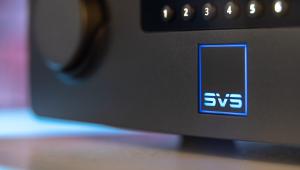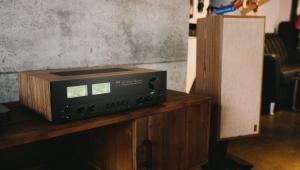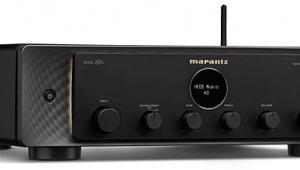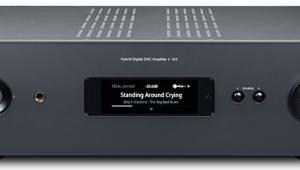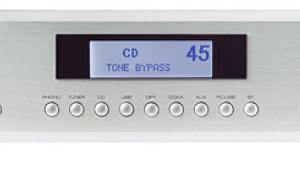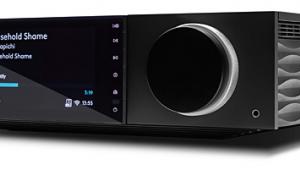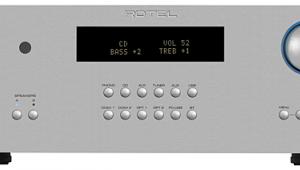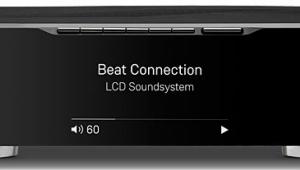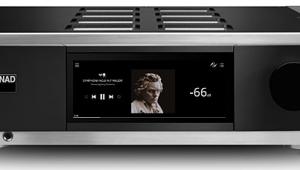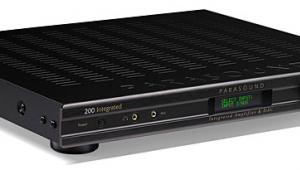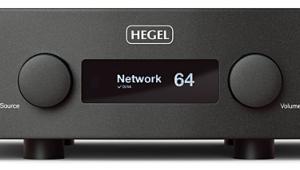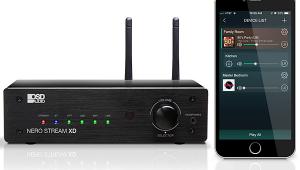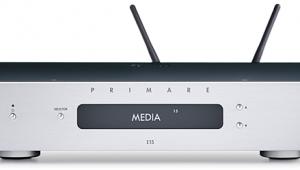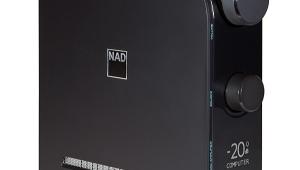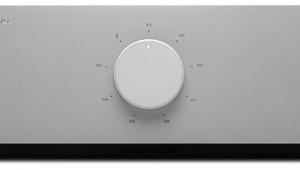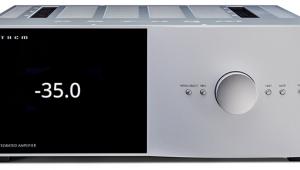What speakers did you use for testing?
NAD C 3050 LE Integrated Amplifier Review Page 2
Beyond playing two-channel music including hi-res streams with full-on audiophile qualities, its Dirac thing, and the BluOS thing, NAD’s amp doesn’t really do a whole lot, nor is it meant to. In the interest of thoroughness, I hooked up my vintage (that word again) Rega Planar turntable and played a few LPs. Sound was warm, satisfying, and detailed, with full dynamic range within the limits of the LP format, which is to say at least 20 dB worse than an average CD, to say nothing of hi-res audio.
.jpg)
I also tried the NAD’s eARC port from my Sony OLED set, which worked as expected, so if “we’d also be upgrading the TV!” is part of your domestic argument, go for it! The NAD’s tone controls are strictly a front-panel affair: you have to be standing there to operate them, or the balance control. (You asked for vintage….) They are, however, quite effective and well-engineered, delivering a more gradual, wider-range treble control, and somewhat less boom-centric bass range than those on many mass-market amps and receivers. More trivially, while the C 3050 LE’s volume knob is silky and solid, the tone and balance items are a bit less premium-feeling than should be the case on a $2,000 amp. And the fascia’s gold-on-black markings are tough to read under less-than-bright lighting.
But those meters! They’re the bomb, and seemed accurate enough. As mentioned, a rear-panel switch allows you to choose to display power-out levels going into the speakers or preamp-levels, reading before the volume control. We all need more meters in our lives.
Bluetooth pairing was drama-free, and thus streaming hi-res content from the Tidal app sounded quite good, even though my few-generation-old iPhone still lacks any of the more modern B.T. codecs. (For pity’s sake, Apple….) When I tried to set the C 3050 LE as a Roon endpoint, I got a popup telling me that the manufacturer (NAD) has not yet completed the certification process, likely due to how new it is. However, Roon and other-sourced playback worked fine via Apple AirPlay, which admittedly is limited, absent Apple Music, to a max 24/48 format. (Roon may well be implemented by the time you read this, but I could find no mention of C 3050 LE firmware or updates anywhere on NAD’s website.)
.jpg)
Streaming-wise, ergonomic issues come down to the Bluesound (BluOS) app. This is broadly capable of streaming, local music-server access, and ‘net-radio listening, and reasonably intuitive. The app has grown on me, though there are still some confusing aspects, such as a “Bluetooth” input-select option despite the fact that the amp auto-selected B.T. from every source I tried. And then, if you sometimes use native streaming apps such as Tidal or Spotify, there’s the potential confusion of what track was left playing, at what volume setting (Surprise!), by which app. In fairness, this sort of cluster-fun can occur with any streaming gear that takes this One-App-To-Rule-Them-All approach, such as KEF’s Connect or Denon’s HEOS. On one occasion, after an idle weekend, the Bluesound app failed to “find” the C 3050 LE. There’s no “troubleshooting” section in the amp’s brief manual, which you will find only online, but a hard power-cycling by unplugging the AC cord for a few minutes—always the first thing to try—brought it back into view.
Elsewhere on the human-factors front, there’s not really much to report. The remote included with the 3050 LE is a multi-model unit with a dozen or more largely irrelevant keys. The ones affecting the amp were Volume/Mute and the step-through Source rocker, though the numeric keys direct-access the various inputs if you want to memorize which selects which. There’s also a Display key that dims the 3050 LE’s front-panel volume-level LEDs across six levels—mercifully, since at their brightest these might risk retinal damage.
The 3050 LE’s manual suggests that the remote’s EQ key will engage/disengage Dirac, but this was not the case in my trials. The remote’s transport keys will work to command a source playing via BluOS, but you have to toggle the remote from its AMP mode to Blu mode to enable this. I don’t like to niggle, but it’s my job; the C 3050 LE provides just a single analog line-in, so if you have more than one analog-only legacy source... I get that, like virtually all modern integrated amps, this is a wireless-streaming-first design, but, especially given the “vintage” thing, maybe including two would’ve been nice? Also AWOL: a USB-B port for wired-digital/streaming.
.jpg)
A few remaining rear-panel features deserve a mention. First, a nicely etched plaque proudly declares that your amplifier commemorates 50 years of NAD and is number XX of 1972 produced. That number mirrors the firm’s birth year — a bit hokey, perhaps, but a forgivable celebration. Preamp-out and power-amp-in jacks, something we don’t see enough of these days, are nicely joined by solid metal links, removable if you want to use pre- or -power sections individually or insert a component between them. Although a bit disappointingly, there’s no “pass-through” input that might permit the NAD’s power section to conveniently serve two channels of a surround system. Lastly, there’s a Subwoofer output. It is just a single jack, so no upgrade to Dirac Bass Control multi-sub integration/correction is on offer.
In Conclusion
NAD’s C 3050 LE fully delivers on its promise of serious audiophile amplification with a side serving of streaming tech in a comfortably/not-painfully retro package at a very fair value. That statement is complicated, however, by NAD’s bewildering array of fully one dozen other integrated amplifier models, including a few that are variously equipped with network streaming/BluOS, DiracLive, and other hybrid-Class D technologies at power levels from 80 up to 200 watts per channel and at suggested prices from a few hundred dollars all the way up to the Master Series M33 that I raved about in these pages a couple of years back and which remains a jewel today at an eye-watering $5999.
So, if the C 3050 LE doesn’t stir your coffee, another NAD model very well might. But if, as I suspect, the C 3050 LE was conceived to hit the sweet spot amidst this crowd, bullseye!
- Log in or register to post comments

